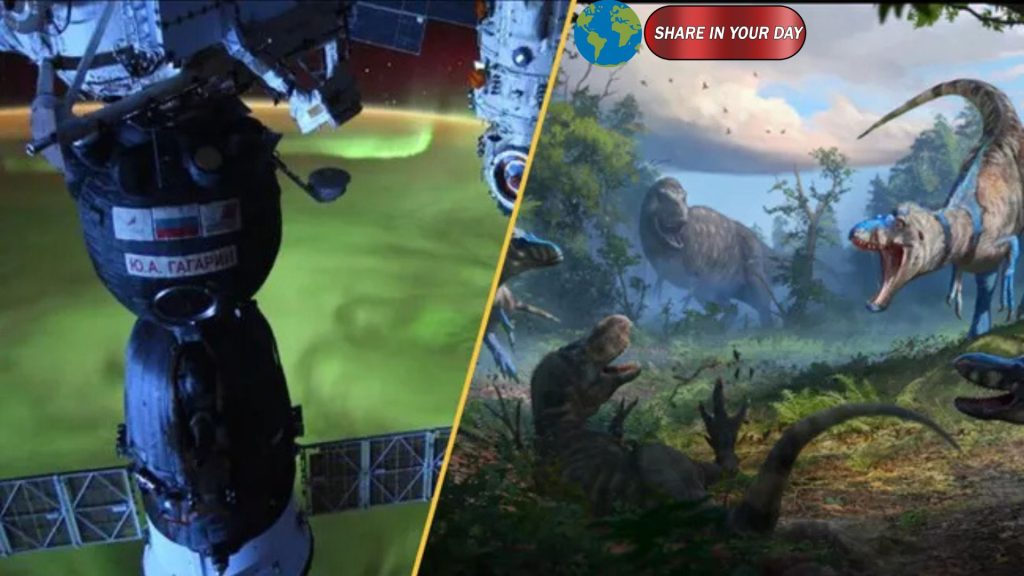Solar‑System Shake‑Ups: A Brightening Interstellar Comet, a Tiny T. Rex Rewrite & Chatbots That Get Smarter When You Yell at Them
Solar Secrets: Heating the Sun’s Outer Layers
A major new study has offered a fresh look at why the outermost layer of our star — the Sun’s corona — is far hotter than the interior. Researchers detected magnetic waves, long theorised but only now clearly observed, carrying energy outward from the Sun’s interior toward the corona.
These magnetic fields buckle, twist and erupt — producing flares and streaming charged particles that can spark geomagnetic storms on Earth. One recent analysis even warns that the next extreme superstorm could devastate satellites.
What this means: we’re getting closer to understanding the physics of our star’s outer layers — critical for forecasting space weather and protecting technology on Earth.
An Interstellar Visitor: Comet 3I/ATLAS
The interstellar comet known as Comet 3I/ATLAS has arrived at perihelion (its closest point to the Sun) — and it’s showing dramatic changes. According to observations from the James Webb Space Telescope and NASA spacecraft, the comet is rapidly brightening, releasing gas at high rate, and revealing the effects of billions of years travelling through interstellar space.
Radiation exposure appears to have altered its chemistry.
Why we care: studying an object from beyond our solar system gives clues about the building blocks of other systems and the journey of interstellar matter.
Tiny Tyrannosaur, Big Implications: Nanotyrannus lancensis
For decades, paleontologists have debated whether Nanotyrannus lancensis was simply a juvenile version of the mighty Tyrannosaurus rex — or its own distinct species. A “Dueling Dinosaurs” fossil find (a Triceratops locked in battle with a tyrannosaur) provided fresh data that leans toward Nanotyrannus being a separate adult species, not just a young T. rex.
The upshot: our understanding of tyrannosaur diversity may need revision. Paleontologists may now accept Nanotyrannus as its own species — though debates may continue.
This matters because it tweaks the evolutionary tree of large carnivorous dinosaurs, informing how they grew, hunted and diversified.
Get Angry at Your Chatbot? It Might Actually Get Smarter
Here’s a quirky one: a new study suggests that being rude to your chatbot may slightly improve its accuracy. According to the research, chatbots returned better answers (by about 4%) when users issued prompts with anger or insults compared to polite wording.
But there’s a caution: the researchers warn that rudeness toward machines could spill over into human‑interactions. And yes, there’s a tongue‑in‑cheek warning about future AI possibly remembering our digressions.
Takeaway: while this is an amusing behavioural effect, it doesn’t necessarily mean we should cultivate hostility — and the improvement margin is modest.
Why This Week’s Science Matters
Understanding solar magnetic waves and extreme space weather helps protect satellites, power grids and communications.
Observing an interstellar comet offers a window into how other stellar systems might function — and how our own solar system fits in.
Re‑evaluating tyrannosaur classification deepens our insight into dinosaur evolution and diversity.
The chatbot experiment touches on interaction design, AI behaviour and how subtle aspects of user input can influence machine output.
Final Thought
Science keeps advancing — from the vastness of interstellar visitors to the microscopic patterns of human‑AI interaction. This week’s highlights — a blazing comet from across space, a tiny but mighty dinosaur reevaluation, solar mysteries being unlocked and even our own behaviour with machines — show how innovation and new data continue to reshape our understanding of nature, cosmos and technology





